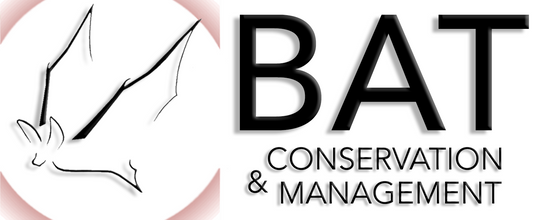Indiana Bat, Tricolored bat, and Northern Long-ear Bat Ecological Services
To discuss your project, contact
John Chenger, President • jchenger@batmanagement.com • Tel/Text: 814.442.4246 • USFWS permitted range-wide since 2000
Bat Habitat Survey
BCM will provide a team of biologists to fully inspect and examine potential habitat for Indiana , Northern Long-ear, and Tricolored bats. During your habitat survey, any potential suitable habitat that is encountered will be permanently documented with photographs, appropriate agency forms as needed, as well as GPS search tracks in your project area. Surveys are customized to client's needs and agency requests. Common variants include potential roost tree inventories, rocky habitat assessment, and mine portal surveys. Bat Acoustic Monitoring
Acoustic monitoring is reliable, faster, and relatively less expensive than physical capture surveys (mist netting) in certain areas of the country. In particular, when the species of interest is loud, easy to identify, easy to record (such is the case with Tricolored and Florida bonneted bats), and bat calls are manually reviewed by experts, acoustic monitoring is the preferred method of survey to meet most compliance requests. In certain areas of the Eastern US, and in the hands of our experts, it may ideal for Indiana and Northern long-ear bats. BCM understands the oft-experienced time constraints associated with certain projects and is happy to consult with clients in order to determine what the best approach is in order to complete the work needed while remaining in compliance with state and federal agency regulations. For decades BCM has been on the forefront of acoustic monitoring for bats as host to many workshops and instructional programs. Our biologists are fully equipped with a wide selection of modern full spectrum tools and siting know-how to provide you with the highest quality acoustic monitoring survey possible, with the least field time as possible. After collecting field recordings, all potential calls are analyzed through up to two USFWS-approved auto-classification software, but this is often just a gross assessment inevitably containing undesirable false-positives. Staff with decades of acoustic ID experience provide an expert review of files flagged as species of interest, separating non-bat sounds or confusing species which overlap with target species. As with all results of the fieldwork studies we offer, acoustic data is saved and permanently recorded in its original form for reporting and future recall. Summer Mist Net Survey
BCM has safely surveyed thousands of individual mist net sites since 2000. If your project is in need of mist-netting, BCM is able to offer thorough, fast, and efficient sampling of your project area. This type of summer bat surveying technique is most often conducted for one or more of the following reasons:
Once your mist-netting project has been planned, BCM is very efficient in carrying your survey from start to finish. Sampling in accordance with the draft Indiana bat recovery plan, your local US Fish and Wildlife office, as well as your state¹s wildlife agency guidelines, we make sure you are in full compliance with the latest protocols and guidelines. As with most of the fieldwork studies that are offered by BCM, mist-netting is very season-specific and requires a good amount of attention to planning. However, BCM offers several levels of this service from technical assistance/equipment for collaboration with our partners to all-inclusive project management. Emergence Surveys
Emergence surveys follow a USFWS protocol to determine how many, if any bats are emerging from a potential tree, building, cave, mine, cliff, rock, or other roost structure. While agencies prefer a live person monitor for bats, multiple roosts can also be recorded with night vision or thermal cameras. Bat detectors cannot definitively tell where exactly a bat is on the landscape, so they cannot be relied upon for emergence surveys. Detectors can be used to suggest species which may be helpful in some regions depending on the goals of the survey. Radio Telemetry
Often times radio telemetry is conducted in conjunction with an ongoing mist-netting project, and is even required in some instances. Since our first project in 2000, BCM has provided the necessary equipment and expertise that thoroughly and effectively satisfies your telemetry requirements. Having one of the most extensive arrays of handheld, vehicle mounted, and aircraft mounted telemetry equipment, we are equipped to take on small to very large projects that other contractors may not be outfitted to do. Due to a bat's propensity to sometimes travel long distances, an ill-equipped crew can lead to lost bats and inexcusable embarrassment with agencies, ultimately causing worst-case assumptions, increased mitigation costs, project delays, and possibly repeat work that quickly add up in time and money. We are proud to report that of the hundreds of bats we have radio tracked since 2000, our team has only ever "lost" two summer bats on the landscape, one MYOLEI in 2003 and a MYOGRI in 2015. Whether you are interested in summer foraging routes, roost identification, or Indiana bat migration, these surveys are best planned in conjunction with advisement from the regional US Fish and Wildlife Service office and state wildlife agencies. In addition, having a team of highly experienced trackers can be essential to successful telemetry efforts, a commodity that BCM is proud to be able to offer its clients.
|
